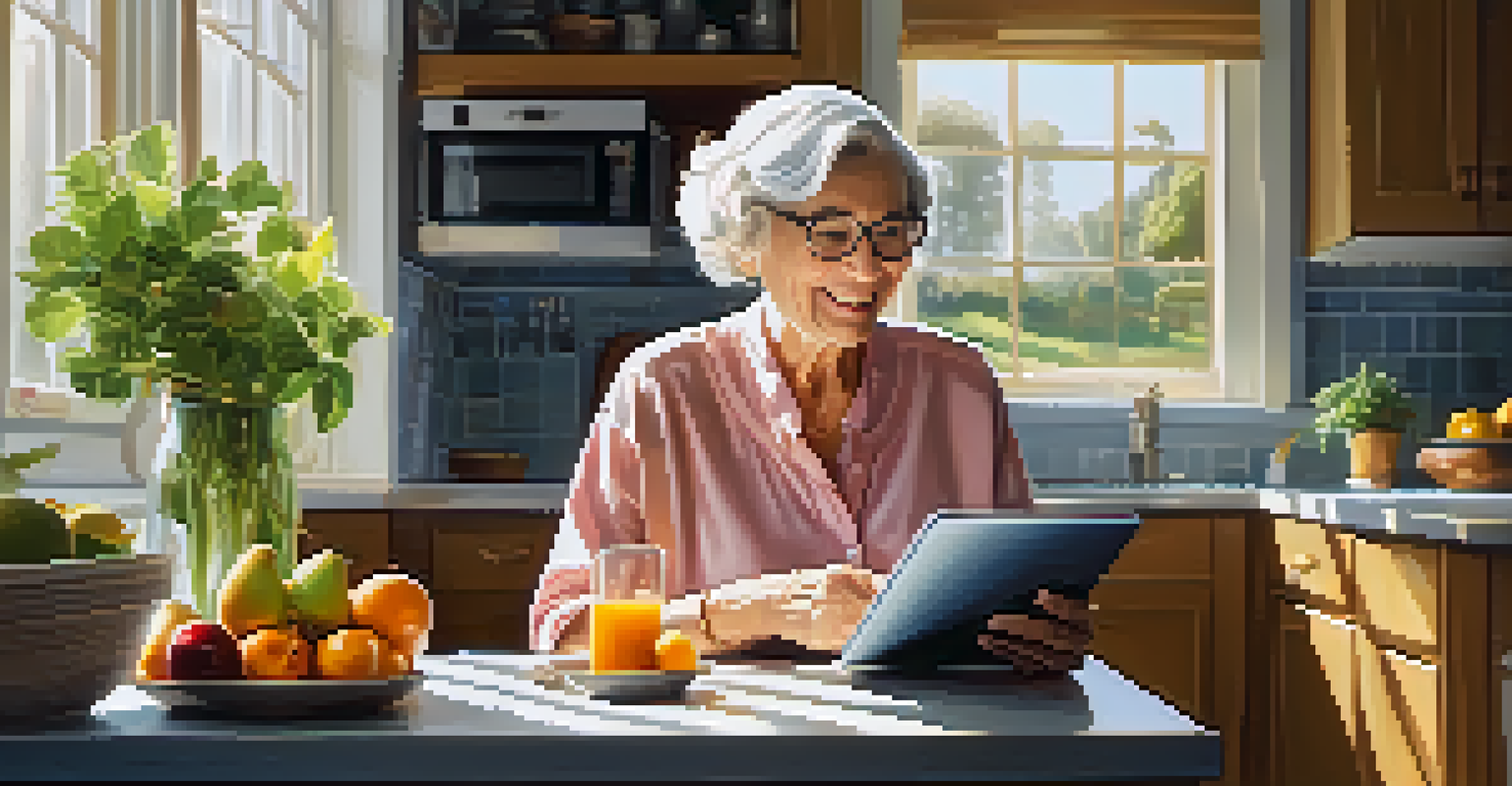Elderly Care: Technology Solutions for Aging Population

Understanding the Needs of Our Aging Population
As the global population ages, understanding the unique needs of seniors becomes crucial. Many older adults face challenges such as mobility issues, chronic health conditions, and social isolation. Recognizing these needs helps caregivers and families provide better support and improve the quality of life for their loved ones.
Aging is not lost youth but a new stage of opportunity and strength.
Moreover, with advancements in healthcare, it's important to note that today's elderly are more tech-savvy than ever before. This shift creates opportunities for technology to bridge gaps in care and enhance communication. By acknowledging these changing dynamics, we can tailor solutions that resonate with the elderly's preferences.
Lastly, the importance of a holistic approach cannot be overlooked. Combining technology with compassionate care ensures that seniors not only receive assistance but also feel valued and connected. It’s about creating an environment where they can thrive and lead fulfilling lives.
Telehealth: Bringing Healthcare to Their Doorstep
Telehealth has revolutionized the way seniors access healthcare services. With just a few clicks, they can consult with doctors without the need for travel, which can be challenging for many. This not only saves time but also reduces the stress associated with traditional doctor visits.

For instance, platforms like Zoom and Skype allow patients to have virtual appointments, making healthcare more accessible to those with mobility issues. This technology also helps in monitoring chronic conditions from the comfort of home, ensuring timely interventions when needed. Telehealth thus empowers seniors to take an active role in managing their health.
Tech Enhances Senior Care
Innovative technologies like telehealth and wearable devices are improving healthcare access and monitoring for seniors.
Additionally, telehealth fosters regular communication between patients and healthcare providers. This ongoing connection can lead to better health outcomes, as it encourages adherence to treatment plans. Ultimately, telehealth exemplifies how technology can enhance the caregiving experience.
Wearable Devices: Monitoring Health in Real-Time
Wearable devices, like fitness trackers and smartwatches, are becoming increasingly popular among seniors. These gadgets can monitor vital signs such as heart rate, activity levels, and even sleep patterns. Having this data available in real-time can alert caregivers and family members to potential health issues before they escalate.
Technology is best when it brings people together.
For example, devices equipped with fall detection technology can notify emergency contacts if a senior takes a tumble. This immediate response can be lifesaving and provides peace of mind for both the elderly and their families. Seniors can also set personal health goals, which encourages a more active lifestyle.
Moreover, many wearables come with user-friendly interfaces and can sync with smartphones, making them accessible to a broad audience. They empower seniors to stay proactive about their health while fostering independence. This blend of technology and personal care is a game-changer for elderly care.
Smart Home Technology: Enhancing Safety and Comfort
Smart home technology is transforming the way seniors live independently. Devices like smart lights, thermostats, and security systems can be controlled remotely, making homes safer and more comfortable. For instance, motion sensors can detect unusual activity and alert caregivers if something seems amiss.
Voice-activated assistants, such as Amazon Alexa or Google Home, can assist seniors in daily tasks, from setting reminders to making calls. This hands-free operation is particularly beneficial for those with mobility challenges. It’s almost like having a personal assistant, making their daily routines smoother.
Smart Homes for Independence
Smart home technology promotes safety and comfort, allowing seniors to live independently with peace of mind.
Additionally, smart home technology can foster a sense of security for both seniors and their families. Knowing that help is just a voice command away can alleviate anxiety and encourage independence. By integrating these technologies, we can create environments that promote safety and support.
Robotics: Companionship and Assistance for Seniors
Robots are emerging as valuable companions and assistants for the elderly. From robotic pets that provide companionship to machines that help with daily tasks, these innovations aim to enhance the quality of life. For example, robots like PARO, a therapeutic seal, have been shown to reduce stress and loneliness in seniors.
Moreover, delivery robots are being piloted in various communities to help seniors receive groceries and medication without leaving home. This not only promotes independence but also helps maintain social connections. The integration of robotics in elderly care is a perfect example of how technology can address emotional and physical needs.
While some may still view robots with skepticism, their potential to improve seniors’ lives is undeniable. As technology advances, we can expect even more sophisticated solutions that cater to the emotional and practical needs of our aging population.
Online Communities: Combatting Isolation Among Seniors
Online communities are becoming vital for seniors looking to connect with others. In an age where social isolation is a growing concern, platforms like Facebook and dedicated forums provide spaces for seniors to share experiences and forge friendships. This connectivity can significantly enhance their emotional well-being.
Moreover, many organizations are developing apps specifically designed for seniors, focusing on social engagement and support. These platforms often include features that facilitate group activities and discussions, encouraging participation and reducing feelings of loneliness. This sense of belonging is crucial for mental health.
Combating Isolation Online
Online communities provide vital social connections for seniors, helping to alleviate feelings of loneliness.
In a world increasingly driven by technology, fostering these online connections offers a lifeline for many seniors. It’s a reminder that even in a digital age, the essence of community and support remains as important as ever.
The Future of Elderly Care: Innovations on the Horizon
The future of elderly care is bright, thanks to continuous innovations in technology. With ongoing research, we can expect groundbreaking solutions that will further enhance the lives of seniors. Areas like artificial intelligence and machine learning are poised to revolutionize personalized care plans, tailoring them to individual needs.
Moreover, advancements in virtual reality (VR) could provide therapeutic experiences for seniors, helping them to relive cherished memories or even explore new environments. This technology could significantly affect mental health and cognitive function, offering seniors a way to stay engaged and active.

As we embrace these emerging technologies, it's essential to keep the focus on the human element of care. Balancing innovation with compassion will ensure that the elderly population not only receives care but also feels valued and connected. The journey ahead is promising, and together we can create a brighter future for our aging loved ones.